Happy Birthday in the style of Chopin!
Improvised by Edoardo Brotto
Transcribed by Alexander Norden
Revised and approved by Edoardo Brotto

Piano Trivia Time #3 - [Click images to browse]: Which of the following four music instrument spare parts belong inside a piano?
|
|
The answer to this is picture number 3 of 4. It is called an agraffe and this particular one can be found in a Steinway grand. |
|
|
The primary purpose of an agraffe is to hold down the strings near where the hammers strike up. They keep the strings from being lifted up by the hammer blow and pulling them out of tune. At the... See More The primary purpose of an agraffe is to hold down the strings near where the hammers strike up. They keep the strings from being lifted up by the hammer blow and pulling them out of tune. At the top of the piano's range, the agraffe and the plate it screws into would get in the way of the hammer, hence other alternatives are employed.. Using agraffes is generally more expensive and it is generally considered "better" than not using them. It is however, but one small factor in the design and build quality of a piano. Agraffes are also not necessary on uprights, although some do have them. |
|
|
For completeness sake: Picture 1 of 4 is a point screw for a Yamaha flute. Picture 2 of 4 is a violin Bridge. Picture 3 of 4 is a grand piano Steinway agraffe 7/32". Picture 4 of 4 is an Octave... See More For completeness sake: Picture 1 of 4 is a point screw for a Yamaha flute. Picture 2 of 4 is a violin Bridge. Picture 3 of 4 is a grand piano Steinway agraffe 7/32". Picture 4 of 4 is an Octave Rocker Key for Selmer saxophones. |
Piano Trivia Time #2 - Which classical piano piece is "I'm Always Chasing Rainbows" based off of?
https://www.youtube.com/watch?v=6CMSjI-Znc4

|
|
The answer to this question is Chopin's Fantasie Impromptu, Op. 66. The song "I'm Always Chasing Rainbow" is based off the captivating melody featured in the Largo section. You can compare the... See More The answer to this question is Chopin's Fantasie Impromptu, Op. 66. The song "I'm Always Chasing Rainbow" is based off the captivating melody featured in the Largo section. You can compare the song by watching an excerpt of Chopin's Fantasie Impromptu below: https://www.youtube.com/watch?v=j1qrz5h2QWs |
Some of the best piano pieces for a funeral are listed below. What would you add to or remove from the list?
1) Death of Åse, Peer Gynt Suite 1, No. 2, Op 46, by Edvard Grieg - https://www.youtube.com/watch?v=uEcZ22XVPus
2) Prelude, No. 20, Op. 28 by Frederic Chopin - https://www.youtube.com/watch?v=XeX4X_1_lo0
3) Enigma... See More
Some of the best piano pieces for a funeral are listed below. What would you add to or remove from the list?
1) Death of Åse, Peer Gynt Suite 1, No. 2, Op 46, by Edvard Grieg - https://www.youtube.com/watch?v=uEcZ22XVPus
2) Prelude, No. 20, Op. 28 by Frederic Chopin - https://www.youtube.com/watch?v=XeX4X_1_lo0
3) Enigma Variations, No. 9 (Nimrod) by Edward Elgar -
https://www.youtube.com/watch?v=nz8DVpcyLZM
4) Lacrymosa (from Requiem), S 550, by Mozart/Liszt -
https://www.youtube.com/watch?v=rKl4B75td70
5) Ave Maria, S 558, No. 12 by Schubert/Liszt -
https://www.youtube.com/watch?v=RCucnn-95nY
6) Symphony No 1, Mvmt 3 by Gustav Mahler -
https://www.youtube.com/watch?v=g3pu8migxZQ&t=28s
7) Harmonies poétiques et religieuses, No. 7 (Funérailles) by Franz Liszt - https://www.youtube.com/watch?v=EadS7DEHSKM
8) Piano Sonata No 2, Mvmt 3, by Frederic Chopin - https://www.youtube.com/watch?v=oL_HFnnywEU
9) Pavane pour une infante défunte by Maurice Ravel - https://www.youtube.com/watch?v=oPHSHZssOLs
10) La Cathédrale Engloutie by Claude Debussy -
https://www.youtube.com/watch?v=p-4qAxZ0F6s

Do you think there will be an impact on technique/playing/dynamics if most (70%) of the weekday practice is done with the muted pedal (middle pedal) on the upright? Reason for that is because the practices can only start from 9:30 pm or later.
|
|
90% confident that it will have a negative impact. A lot of learning comes from the ability to feel the keys/hammer, and to control how much / fast to strike them. Your reactions / responses are... See More 90% confident that it will have a negative impact. A lot of learning comes from the ability to feel the keys/hammer, and to control how much / fast to strike them. Your reactions / responses are according to what you heard, and you train your muscles memory based on these. Unless the training is purely for getting notes right, at the stage where expression doesn't matter, and just accuracy matters. |
|
|
Albert and Soo Hin, thanks for sharing your thoughts! I have the inkling that the current situation is not ideal but unfortunately, it is unlikely to change. I love my upright and would like to... See More Albert and Soo Hin, thanks for sharing your thoughts! I have the inkling that the current situation is not ideal but unfortunately, it is unlikely to change. I love my upright and would like to keep it in its original form. :) Will keep the muted practice for getting the notes right or for loud passages. I agree that the softer/more delicate passages should not be practiced with the muted pedal at the first instance. If the passages are meant to be soft, I think it is still ok to practice without the muted pedal even at 10+ pm or 11 pm. :p |
|
|
Definitely a challenge for you, if you can only practice in the late night. Unless you fix your room to be sound-proof! |
Been seeing some Casio digital pianos popping up. Any recommendations?
|
|
Not familiar with the various models. So, you're only looking to buy digital pianos? |
|
|
Read review websites like these: Read review websites like these: And why not try a shop that let's you try out on various digital pianos? Just google for "buy digital piano singapore" and look out for shop reviews. |
|
|
Ya, I'll go down to shops to try, but I'm just afraid to be swarmed by too many models, and I dunno how to choose between them. |
|
|
There is only 1 model to choose from. Please PM me. |
Should I buy digital or normal piano to start learning piano? Should I get one or just play at school or teacher's place? Any advice? Thanks.
|
|
Wow, thanks Zensen! That's very comprehensive. ?? I have mixed feelings la. For me, it's good to start playing casually. But if I can progress well (god knows), might as well take some exams to... See More Wow, thanks Zensen! That's very comprehensive. ?? I have mixed feelings la. For me, it's good to start playing casually. But if I can progress well (god knows), might as well take some exams to prove something? Definitely not to become concert pianist like you mentioned. I'm working, so, being able to play at night is a big deal to me, cos that's the time I probably can practise (I hope so!) ? |
|
|
That being the case, I'd recommend that you start small by buying a digital piano. If space or mobility isn't a constraint for you, I'd recommend a full-fledged one with 88 keys. Depending on your... See More That being the case, I'd recommend that you start small by buying a digital piano. If space or mobility isn't a constraint for you, I'd recommend a full-fledged one with 88 keys. Depending on your budget, a high-end one costs S$2,699 while an entry-level one costs S$700. Mid-range will be around S$1,699. But if you are space-conscious and prefer it to be more mobile (so that it can be moved around easily), then I have a 76-key version ($400+) and a 61-version (also $400+) to recommend for you. If you are ultra-budget conscious, it will be $269. |
|
|
Ya, I think I'd go with a really cheap one at the start. Just gonna start learning, don't think I'll need that many keys. 61 keys sounds a lot to me already. Lol. |
|
|
61 keys (5 octaves) is really the minimum you should start with. This is because any shorter (e.g. 49 keys, 4 octaves) won't allow you to play it with both hands (meaning right hand on melody and... See More 61 keys (5 octaves) is really the minimum you should start with. This is because any shorter (e.g. 49 keys, 4 octaves) won't allow you to play it with both hands (meaning right hand on melody and left hand on bass and chords). Also, you'd need to look for a model that has touch response/touch sensitivity. This is because some very cheap ones don't come with this, thus no matter how soft or hard you strike the keys, the volume/loudness is the same, which makes the music you play sound monotonous/robotic/expressionless! |
Weird models #6: This thread won't be complete without an Usai!
https://www.youtube.com/watch?v=1AmZ2pStWb4

|
|
What's Usai? Looks like piano keyboard. |
|
|
Definitely not! A typical piano octave has 12 keys - 7 white keys jutting forward and 5 black shorter keys. Ignoring the colors, we can say a typical piano has a 7-5 configuration. The Usai... See More Definitely not! A typical piano octave has 12 keys - 7 white keys jutting forward and 5 black shorter keys. Ignoring the colors, we can say a typical piano has a 7-5 configuration. The Usai keyboard however has a 6-6 configuration - a "balanced" combination. If you color the keys on the Usai, you will find that F#, G# and A# wind up as three keys jutting forward, hence they are painted black up front. |
|
|
Read more about it here: http://www.balanced-keyboard.com/ |
Weird models #7: Sail away with the Seaboard! Portamento heaven!
https://www.youtube.com/watch?v=P2syqXx97LE

|
|
Omg! What's that!?!?! Amazing! |
Weird models #5: Lippens keyboard - hmm... I want one!
https://www.youtube.com/watch?v=k3XveYlhyFs

Weird models #4: The Axis 64 keyboard is interesting...
https://www.youtube.com/watch?v=D7OeRkXWTtQ

Weird models #3: Chromatone keyboards are sci-fi personified...
https://www.youtube.com/watch?v=N_9pbku5j8g

Weird models #2: Is learning on a Dodeka keyboard easier?
https://www.youtube.com/watch?v=muuUMDNZsac

Weird models #1: Ever seen a Jankó keyboard in action?
https://www.youtube.com/watch?v=cK4REjqGc9w

Is there a min qualification in sg for teachers to start teaching piano? I hear different stories across. Some say gr 8, some say must have teacher cert. Is there such a thing called teacher cert?
|
|
If no cert, how to prove the teacher is qualified? |
|
|
The short answer to your question is to interview, audition and examine the portfolio of the teacher-to-be. The latter includes his experience in the music industry, his works, etc. For me (and... See More The short answer to your question is to interview, audition and examine the portfolio of the teacher-to-be. The latter includes his experience in the music industry, his works, etc. For me (and several others in the music education industry) will also observe a demo lesson by him to gauge pedagogical suitability. Many a time, these supersede the paper qualifications he possesses (if any). Disciplines like medicine and engineering would definitely need certified credentials because we can't risk doctors prescribing the wrong medication leading to deaths; and neither can we risk living in buildings that might collapse anytime. But what is music? What is its inherent risk? But if we are talking about teaching FOR THE SAKE of letting students go through the graded EXAMS, then of course his credentials would ONLY matter then. |
|
|
But for many parents like me, I dunno music. So I can't interview them the way you can. I need something easier to measure with. Paper qualifications will be one consideration, of cos. Just... See More But for many parents like me, I dunno music. So I can't interview them the way you can. I need something easier to measure with. Paper qualifications will be one consideration, of cos. Just wondering can any person who knows how to play the piano, and take some exams b4, just suddenly one day decides to teach, and can teach straight away? |
|
|
If you are thinking of finding a piano teacher for your child, then you'd need consider your objective. If you want him/her to take the graded exams (for whatever purpose later in life is yet... See More If you are thinking of finding a piano teacher for your child, then you'd need consider your objective. If you want him/her to take the graded exams (for whatever purpose later in life is yet another big topic by itself, which I shall skip for now) then your question is valid, which I will illustrate below. But if the objective is to let him/her appreciate music, learn it with joy and motivation and to be empowered to play music in a carefree way (without the exam stress) by ear and improvisation for whatever music he likes/listens to, then the paper qualifications of the teacher become highly irrelevant. Let's assume it is the former. Teachers with a teaching licence at a govt school have gone through proper certification and training in pedagogy - explaining why a PhD in Maths may not teach as well as an A Level holder in Maths for a primary school maths syllabus, especially if the latter possess a teaching license (and not the former). In the music ed industry - the phenomenon is similar - my counterparts and I have seen several top notch musicians with superior qualifications but are unable to teach - yet those with lower qualifications can teach better (though their own musicianship isn't that strong). Thus if you are considering between two piano teachers - one with a Diploma in Piano Performance and the other a Diploma in Piano Teaching, and OTHER THINGS BEING EQUAL, the latter is a better choice for your child. |
Excellent Transcriptions #2 - Frank Dupree's transcription of Gershwin's An American in Paris is so well done that people have been asking for his version to replace the current simplistic rendition being sold today. It's that good!
PART 1: https://www.youtube.com/watch?v=fBSXpKj_WSA
PART 2: https://www.youtube.com/watch?v=xtSh6JfiSSA... See More
Excellent Transcriptions #2 - Frank Dupree's transcription of Gershwin's An American in Paris is so well done that people have been asking for his version to replace the current simplistic rendition being sold today. It's that good!
PART 1: https://www.youtube.com/watch?v=fBSXpKj_WSA
PART 2: https://www.youtube.com/watch?v=xtSh6JfiSSA

|
|
I watched the film! But is this used in the film? |
|
|
The 1951 movie An American in Paris (starring Gene Kelly and Leslie Caron) only features the orchestral version of the piece. This transcription is a 2014 version for a pianist to indulge in and... See More The 1951 movie An American in Paris (starring Gene Kelly and Leslie Caron) only features the orchestral version of the piece. This transcription is a 2014 version for a pianist to indulge in and perform with. However, I haven't seen it on sale anywhere yet, possibly some copyright issues. |
|
|
Haha. I like the turning effect of the video btw. Rarely seen. |
|
|
IMHO, the trumpet solo blues tune (followed by the Big Band Broadway feature) is nicer than the Rhapsody in Blue. But in the piano community, fewer know of the former because of it being a non-... See More IMHO, the trumpet solo blues tune (followed by the Big Band Broadway feature) is nicer than the Rhapsody in Blue. But in the piano community, fewer know of the former because of it being a non-piano piece. Thus I always play it via a hybrid of by-ear and improvisation. |
If you were composing piano pieces, what music notation software would you recommend - MuseScore, Finale, Sibelius, or something else?
|
|
Ic.. I often mistake the DAW together with these! |
|
|
Logic Pro does have notation capabilities, but it's probably bare basics. |
|
|
https://en.wikipedia.org/wiki/Logic_Pro Officially a DAW |
I'm told that I cannot turn off the power to my piano. Why? What is the power for?
|
|
Are you using normal or digital piano? |
|
|
Normal |
|
|
Then the power should be for the heater inside the piano. Recommended to leave it on, so that the moisture don't build up. |
This Schoenberg brand baby piano, unlike many other makes, is a real piano just like its regular counterparts (e.g. hammering onto strings), except it is smaller and having fewer octaves. Despite that, you can still play the full piece of Bach's Invention No. 13 in Am on it without the need to perform any transpositions! And it needs at 4 adults to carry it because of its heavy weight. Makes of other small pianos sound more like glockenspiels instead of regular pianos because they use the... See More
This Schoenberg brand baby piano, unlike many other makes, is a real piano just like its regular counterparts (e.g. hammering onto strings), except it is smaller and having fewer octaves. Despite that, you can still play the full piece of Bach's Invention No. 13 in Am on it without the need to perform any transpositions! And it needs at 4 adults to carry it because of its heavy weight. Makes of other small pianos sound more like glockenspiels instead of regular pianos because they use the mechanism of that of the toy piano's.
|
|
This type of piano is a rare sight in Singapore! In fact, yours is the first such piano that I came across. Thanks for hosting Pianovers Meetup #12 and giving so many of us a chance to... See More This type of piano is a rare sight in Singapore! In fact, yours is the first such piano that I came across. Thanks for hosting Pianovers Meetup #12 and giving so many of us a chance to actually play on it! |
|
|
You are most welcome! |
|
|
Very interesting piano!! Never seen one quite like it in sg |
I love Cavatina! Just read up on it in wiki, and it mentioned it was originally written for piano!

|
|
Ya, I just learned in wiki. Ha. The Walking Stick in 1970. Never even heard of this movie. |
|
|
Old movie! |
|
|
Never watch the movie before. ? Think the song is more meaningful if you know the story behind? |
|
|
Touching movie. Must watch! |
I saw 2 pianos placed at tanjong pagar mrt there. So anyone can just play on them?
|
|
Hehe. I'm too shy to play in public. Maybe never will. |
|
|
Mabel, there's always a first time. Try when there's no one around? Then, try again when there's one around? |
|
|
Albert, your profile is impressive. You have played so many pieces! |
|
|
Sometimes, I see piano in hospital. Also public piano? |
So many repeated notes on the right hand.. must be very tiring!

|
|
I heard the keys are heavier on a grand. Shouldn't it be more tiring instead? |
|
|
Keys are indeed heavier on a grand but they have something called double escapement. Double escapement allows for quick play of repeated notes. If I remember correctly, the hammer does not fall... See More Keys are indeed heavier on a grand but they have something called double escapement. Double escapement allows for quick play of repeated notes. If I remember correctly, the hammer does not fall completely, just partially. |
|
|
Interesting. Double escapement. Gotta read up on that! |
|
|
Watching the double escapement action is way better: https://www.youtube.com/watch?v=mGxuD3lWaCs |
There is no Pianovers Meetup on 17 Jun 2018.
The next Pianovers Meetup #82 is on 24 Jun 2018.
Just viewed the performance of this lady - impressed !
Btw, I usually hear this on the guitar instead. Probably my first, or perhaps second, time hearing it on the piano.

|
|
Thanks Gavin for sharing! Amazing pieces. You can play these? |
|
|
Yes. But the Alhambra piece is very tiring on anything but a grand. And, the Villanesca can be quite tricky. The Cavatina is easiest of the lot. Refer to the individual threads that discusses them... See More Yes. But the Alhambra piece is very tiring on anything but a grand. And, the Villanesca can be quite tricky. The Cavatina is easiest of the lot. Refer to the individual threads that discusses them separately in the forums. Thanks. |
|
|
Gavin, you mean it's not tiring to play on grand piano? |
|
|
Pse see my reply in the Alhambra thread. |
Excellent Transcriptions #1 - Debussy's Prélude à l'aprés-midi d'un faune, or Prelude to the Afternoon of a Faun, is originally a symphonic poem for orchestra, but beautifully transcribed here for the piano.
https://www.youtube.com/watch?v=kbr7c2eRpUY

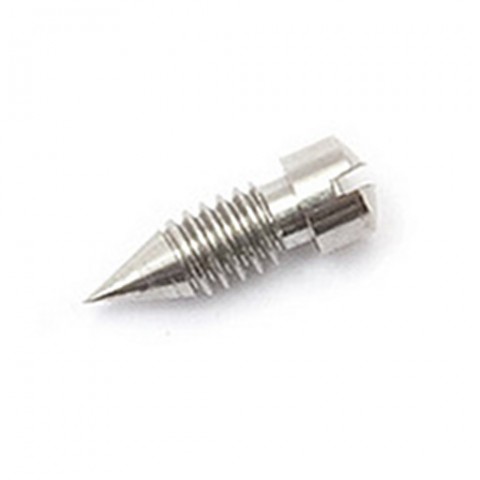
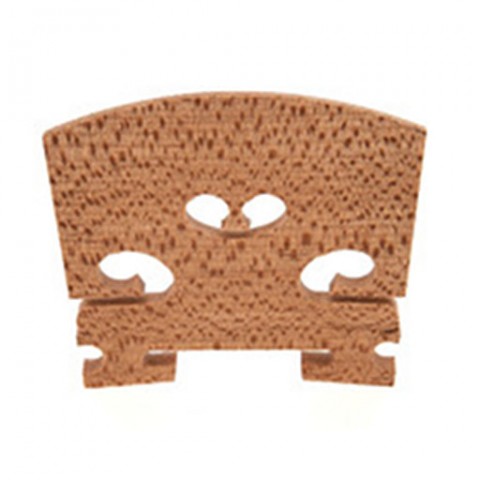
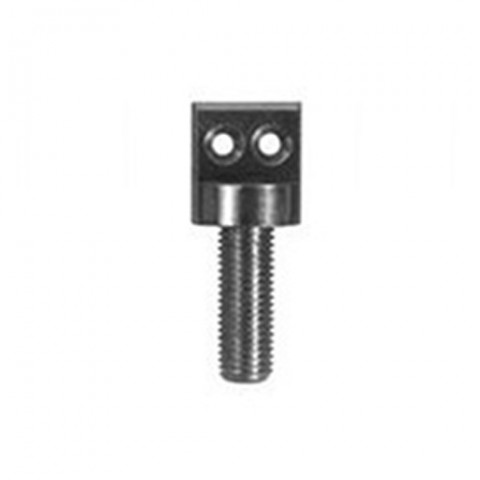
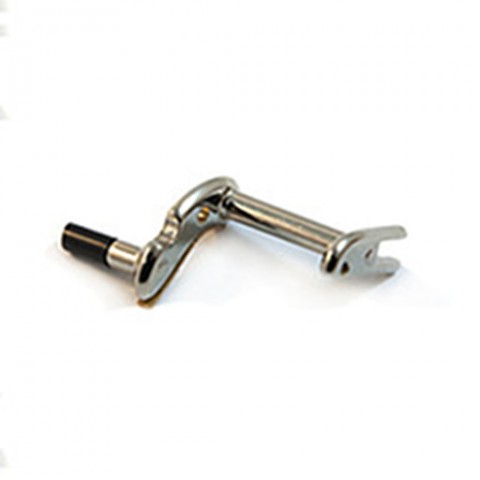
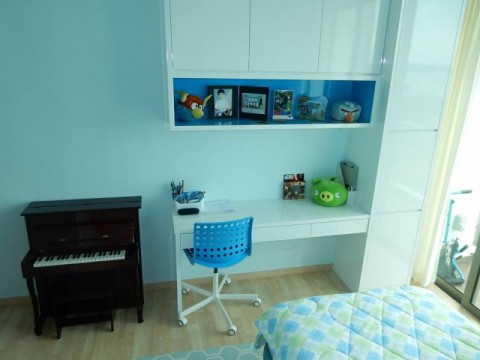
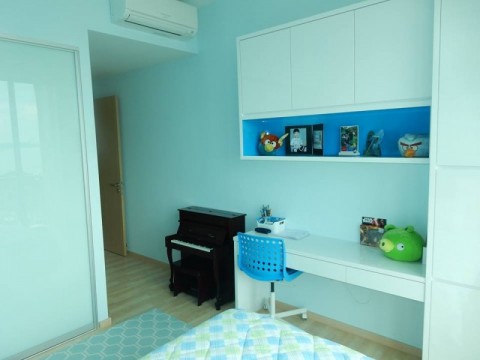
Haha, cos many of Chopin's works (both his piano concertos, his Ballade No 1, Waltzes in Bm, Am, C#m and Nocturne in C#m) are in the minor key!
Ah, nice improvisation there, Zensen. I don't have a flair for improv.
Sorry, what's improvisation? ?
Mabel, improvisation in music is a huge topic which I can conduct an hour-long talk on it. To summarise, it is to make variations to the original music (instead of adhering strictly to its... See More
Mabel, improvisation in music is a huge topic which I can conduct an hour-long talk on it. To summarise, it is to make variations to the original music (instead of adhering strictly to its original score) via a few means. For example, one way of improvisation is to substitute some of the chords used (or even adding new chords in between existing chords). Another way is to play out the chords differently (e.g. from broken chord style to rhythmic style). Adding or changing other textures/layers such as counter melodies and bass lines also constitute improvisation.
Some singers or solo instrumentalists improvise on the melody by changing some of the notes occasionally. Jazz improvisation, on the other hand, allows complete composition of melodic lines along the original music's chord progression.
More advanced improvisations can include addition of new sections (such as adding/replacing an original interlude), employing modulations and change in rhythm/time signature.